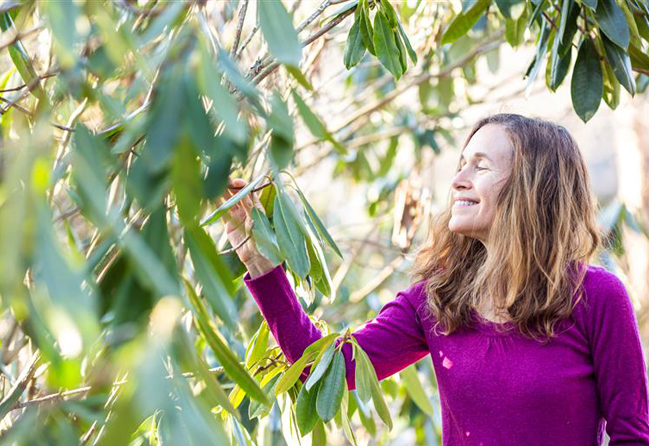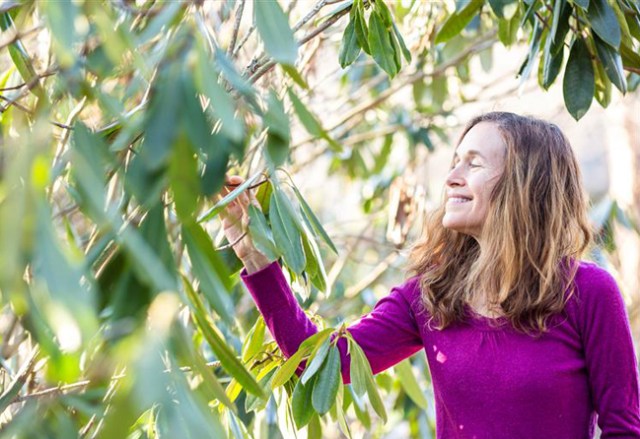
Having built a toy company over three decades with my best friend and husband, Doug, and experiencing the joy of unleashing the imaginations of children through open-ended play, most would think that my life was all fun and games. After all, we had achieved the very definition of “The American Dream” with every shiny bauble to show for it. And along the way, Doug and I also created six beautiful children who were the very essence of the boisterous family I had always imagined. I had absolutely no reason to be unhappy, I truly had it all.
But the truth was, that for as long as I could remember, I suffered a crisis of meaning that I learned to hide from the world. This sense of futility was so overwhelming, that the only way I could survive was by disassociating from all feelings and denying who I was. And since I would never fit in as myself, I turned to validation through achieving academic perfection to attain the acceptance I so deeply craved. I became who I thought the world wanted me to be to the point where I didn’t even know who I truly was.
As I reached middle age, I finally learned that my lifelong anguish had a name: existential depression. And furthermore, those experiencing existential depression were often highly creative and had intense levels of reactivity in their central nervous systems called over-excitabilities. And this realization was life-changing, because for the first time in my life, I saw I wasn’t alone and there were actually others just like me. I knew that the only way I would access peace was to stop racing outside myself for answers and embark on a journey inward to self-acceptance. That journey was so profound and revelatory, that I knew my purpose was to help others find their pathways out of despair in transforming darkness into light. Here are some of the steps that brought me to writing my memoir LifeLines: An Inspirational Journey from Profound Darkness to Radiant Light, and creating our LifeLines ecosystem to offer community and impactful content to others!
1. Embrace Yourself in Totality
Society tells us to dry our tears and “be strong.” But when we do, we are denying who we are and what we feel. And that prevents us from living authentically. Once we come to see that this facade we adopt ultimately leaves us bereft and bitter, we begin to shed that pretension and access the space necessary to truly grow.
2. Accept That We All Need Lifelines
Once I completed my journey and accepted myself in totality, I realized that every day wouldn’t be an easy ride. In fact, many days would be on the dark side of the emotional spectrum! I, therefore, needed a practice to keep me “safe and sane” when I began to plunge below the line of equanimity.
3. Lifelines Are Essential in Three Different Areas
My personal practice of engaging LifeLines involved three distinct areas: self-care, tools, and passions/play. Self-care LifeLines involve the deliberate intention to take care of our minds and bodies. These may seem obvious to many, but for me required making a choice every single day to stay strong. They include eating nourishing food, sleeping 7 hours a night, and exercising in nature. Tools for me include reciting mantras, going to therapy, being mindful in everything I do, and offering myself compassion when my head starts to berate me. The activities and hobbies that bring us joy are the essence of life and move us squarely into our hearts. For me they include writing verses, crafting, photographing nature, listening to music, and drinking tea.
4. Engage in a Deliberate Practice
Just like a diabetic takes insulin to remain healthy, I must also commit to engaging my LifeLines each and every day to remain steadfast. And that means EVERY SINGLE DAY. If we don’t have our practice fully honed during our more contented times, then it won’t be routine when the journey becomes arduous. A practice MUST be practiced no matter the weather, your mood or your circumstances.
5. Find a Community That Supports You
We created LifeLines.com to build a community showing others that “they are not alone.” When we construct a supportive structure around us, we are better able to shine our light and live authentically. We learn from others’ experiences, embrace our uniqueness, and develop the tenacity to keep forging ahead when life throws us curveballs. The community we have forged has already become a lifeline to so many, including me. I am so grateful to have discovered no higher purpose than supporting others to channel their darkness into light and find meaning. And the more our community can help others heal themselves and share their truth, then the more they will do the same for others and make this world a more loving place.
